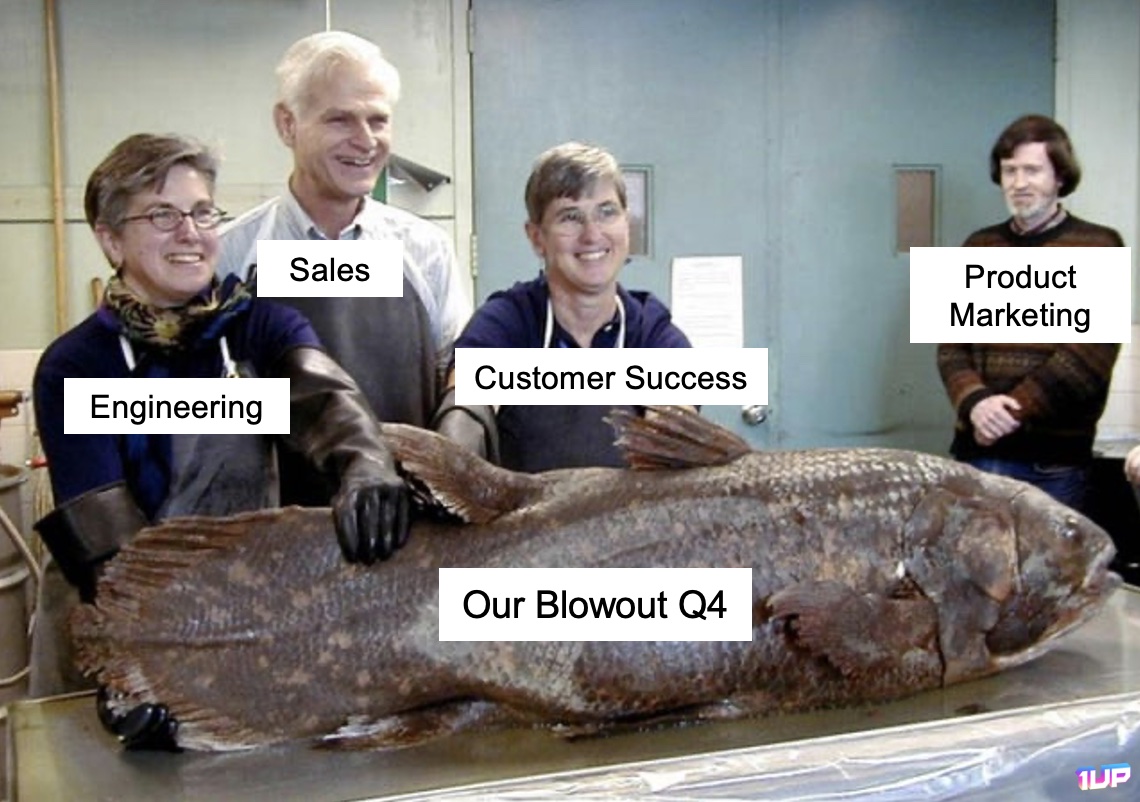4 Ways Marketing Teams Can Be More Competitive
I was recently chatting with a marketing leader at a SaaS company. They told me that deals have slowed down noticeably and that customers were “exploring more options during the buying cycle.” They felt sales had become much more competitive due to today’s budget constraints.
Interestingly, they wanted to know if their business looked competitive from “the outside.”
“If you have to ask, then you’re probably not as competitive as you can be,” I replied.

That’s the case for most businesses.
It’s no longer about who has better branding or which company raised more venture capital. When budgets tighten up, customers take longer to make a decision. They shop around. Deal making becomes more competitive, and brands that fail to adapt fall behind.
Here are some easy ways you can stay competitive when times get tough.
Key Takeaways
- Don’t be afraid to do the bake-off. Customers like comparisons, so make it easy for them to understand why you’re better.
- Prioritize customer stories above all else. They create a social proof that’s difficult for competitors to argue against.
- Make your differentiators loud, obvious, and easy to find. Your website is the number 1 way to accomplish this.
1. Create Us vs Them Content
Don’t be afraid of doing this.
There are plenty of folks who say “Feature vs Feature comparisons don’t win deals.”
Yes, that is true. But they’re not meant to win deals.
Feature comparisons give your customer ammunition they can use to make the case for your product when you’re not in the room. You want the customer helping you compete almost as if they were an extension of your team.
Us vs Them comparisons help you do that and can also set traps for the competition by forcing them to explain specific feature gaps.
Here’s an example of Crowdstrike vs SentinelOne.
Now here’s SentinelOne vs Crowdstrike.
You’ll notice the pages have a very similar structure:
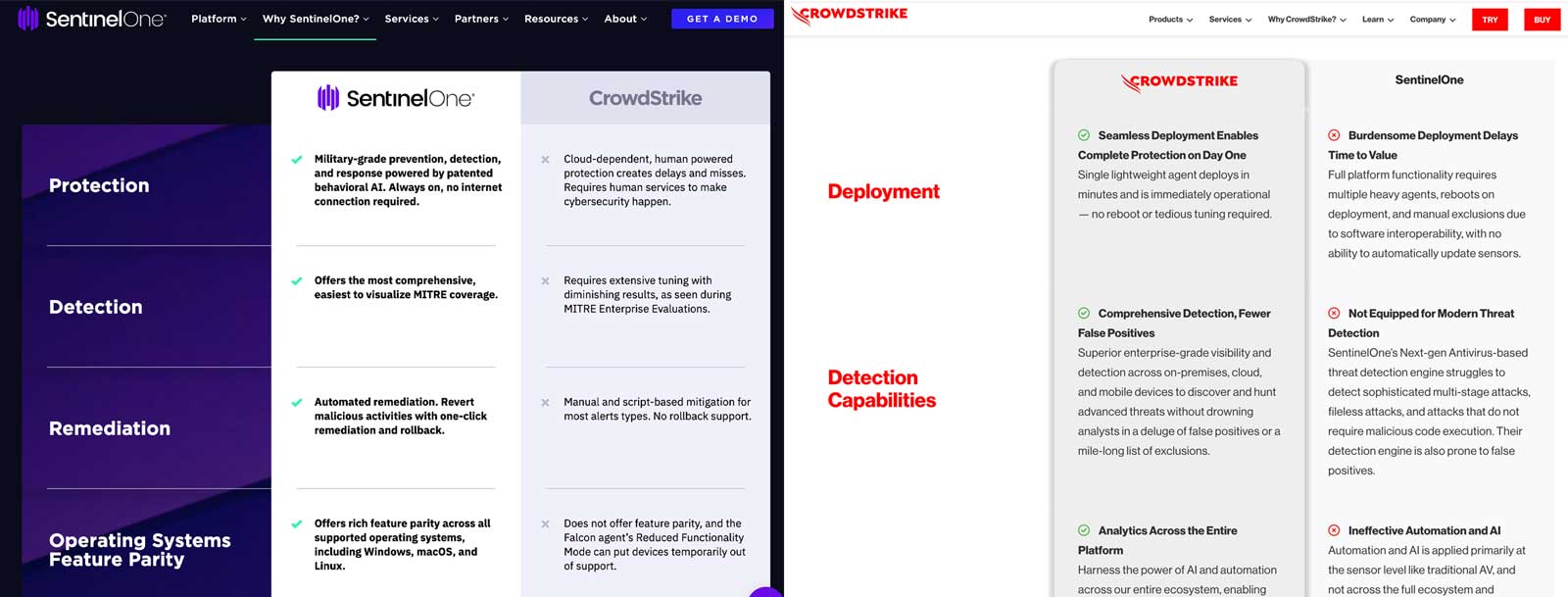
Some brands might not want to be so direct with their marketing. But if your competitor is going to do it, you should be willing to respond.
If you want these pages to be public
Optimize them for SEO so they appear when people search “X vs YourCompany.” You can rake in a ton of qualified search traffic just by publishing a comparison page. More importantly, you prevent that traffic from making its way to your competitors’ version of the same page. Here’s what that looks like from Crowdstrike & SentinelOne.
For a more subtle approach
You can keep a comparison page private but easily accessible to customers:
- Publish it on your website.
- Exclude it from appearing in your sitemap.xml.
- Apply a No-Index tag to the page so it isn’t indexed by Google.
- Share the direct URL with your teammates so they can forward it to qualified prospects.
Remember – comparisons are a tool that your customer can use internally. It’s up to you how loud you want that tool to be.
2. Make a “Why Us” Page
Not all businesses will utilize an Us vs Them comparison. But everyone can benefit from a powerful Why Us page.
These can be effective when you’re selling against a sea of competitors. They enable your customer to argue in favor of your product when you’re not in the room. A Why Us page also serves as the foundation when you’re responding to an RFP questionnaire and need to clearly articulate how your product differentiates.
Don’t have one? You’re missing out on a powerful way of communicating your value proposition.
Many of these pages follow a simple template:
- A 2-liner that sums up why your product matters
- Top 3-5 key differentiators
- A simple problem + solution narrative
- Key stats that demonstrate impact
- Customers who agree with your narrative and can validate these stats
Here’s Hubspot’s Why Choose Us page. It has all of the key elements you want a customer to walk away with:
A 2-liner that sums up why your product matters is what everything else is built on. This should be simple enough that someone can copy paste or recite off the top of their head. In this case it’s also paired with a great call to action:
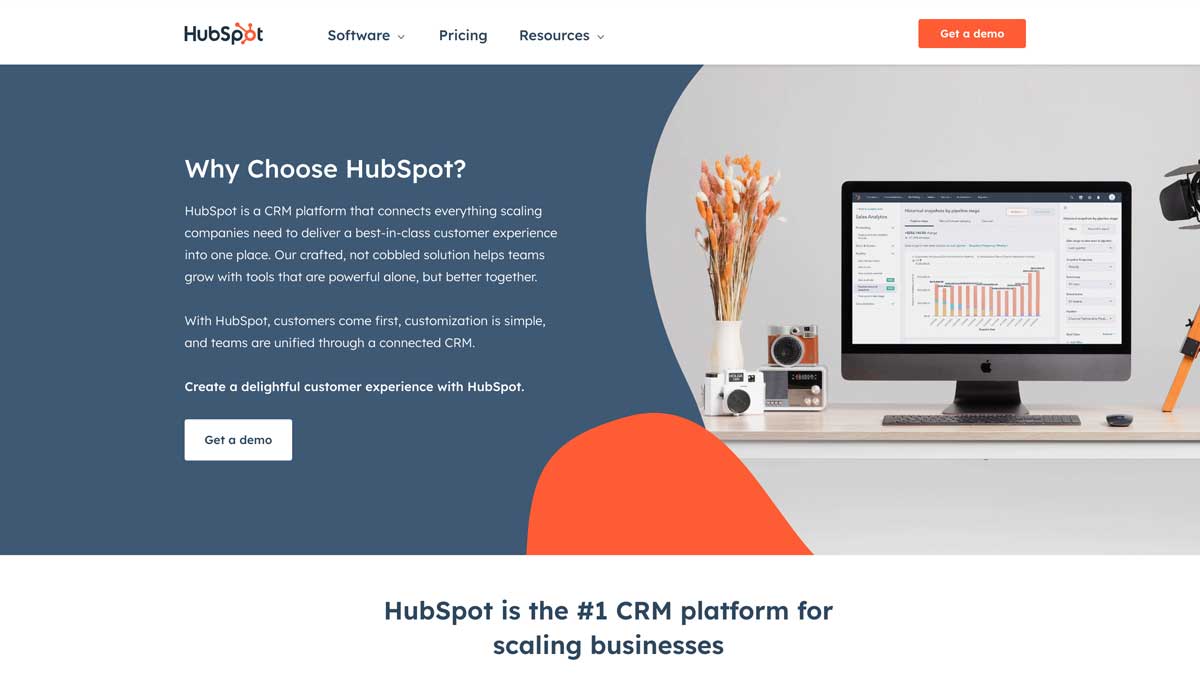
Your top 3-5 key differentiators should be memorable. Don’t go deep on technical aspects or overload readers with industry jargon. The goal is give users something obvious they can call back to later when comparing you with alternatives.
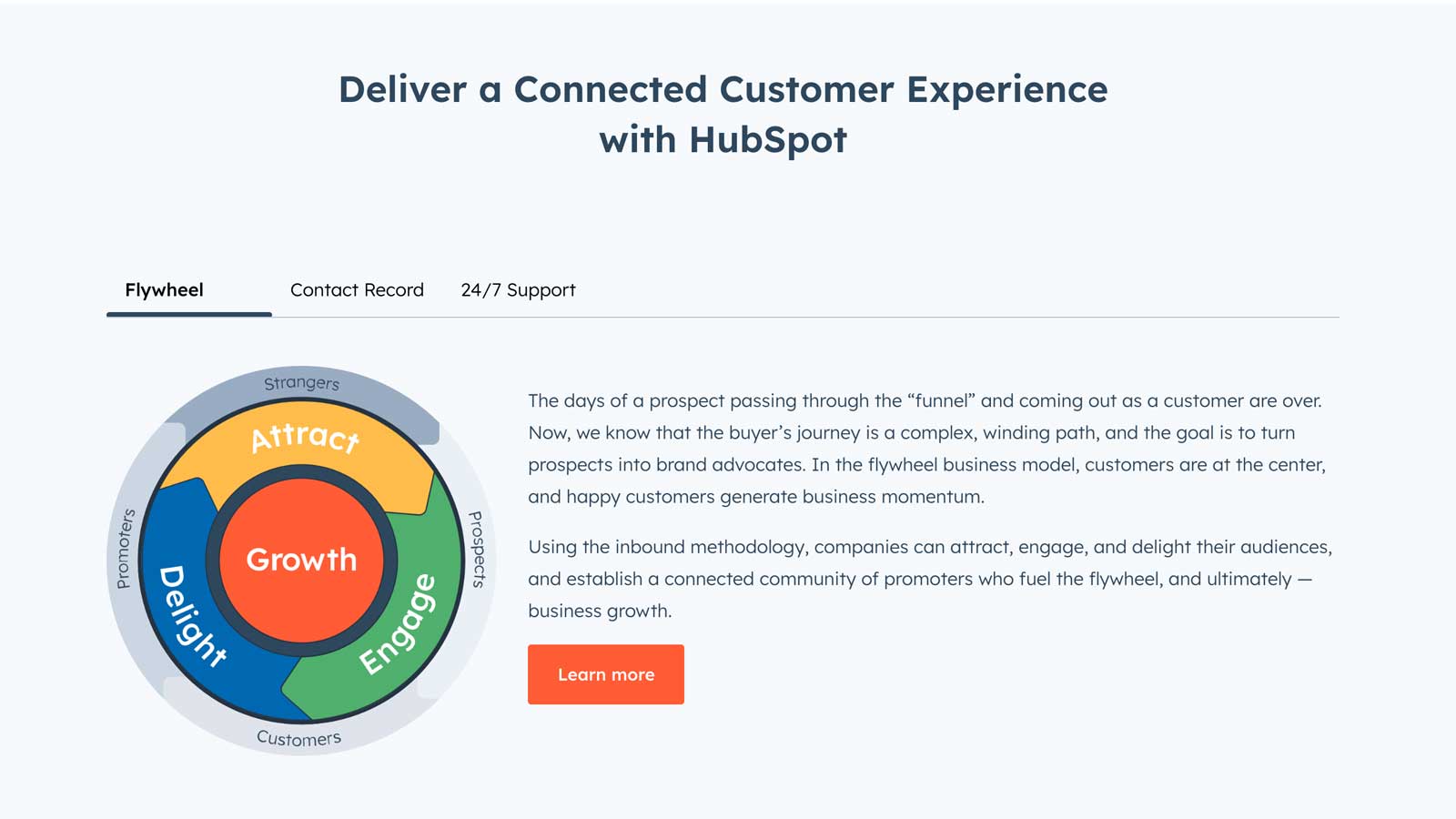
A simple problem + solution narrative can go a long way – especially when presented as a visual. Hubspot has made it so users can screenshot and share a nice visual to explain “why” it matters.
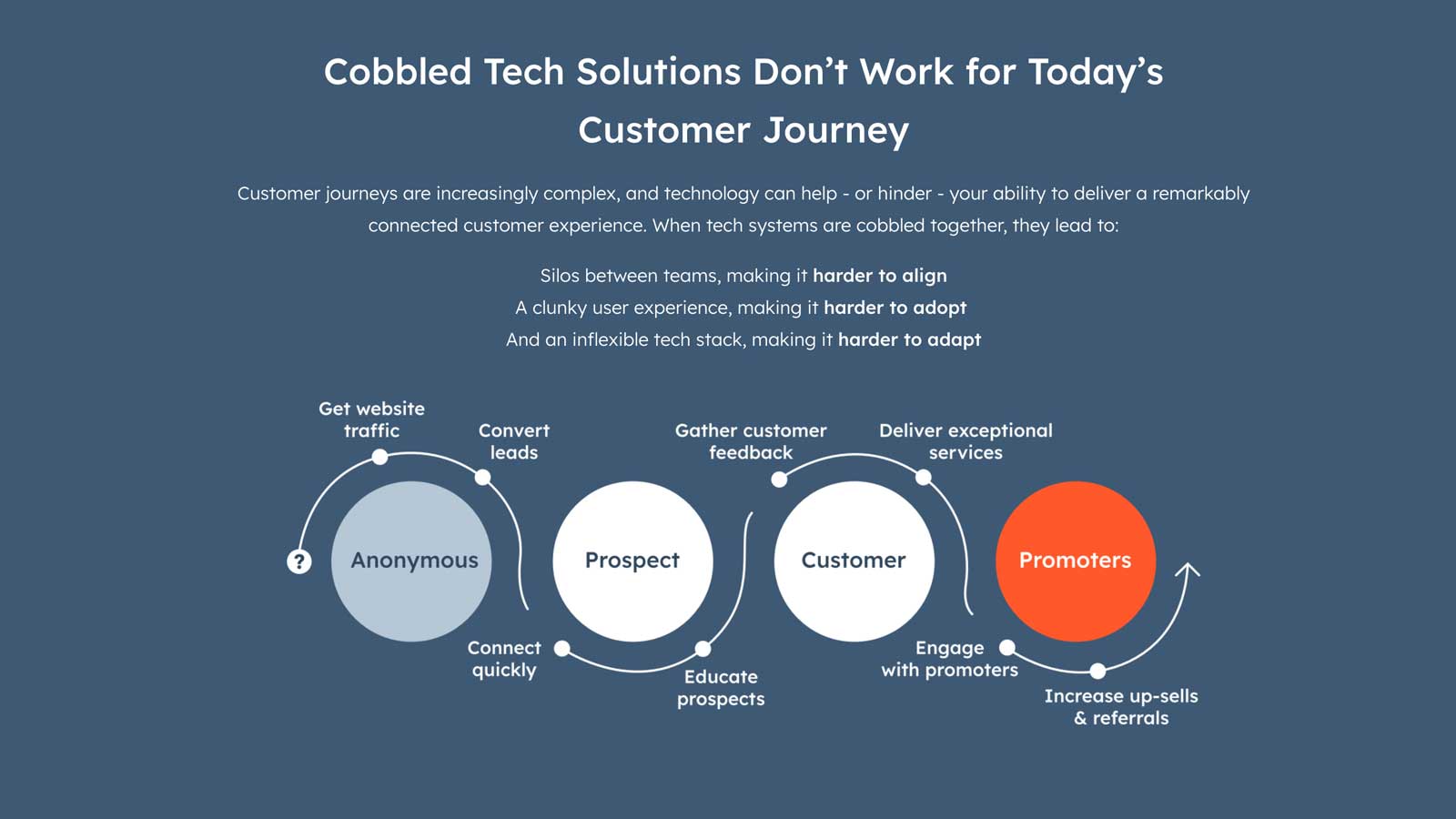
Key stats that demonstrate a measurable impact can be a double edged sword. If you can’t back up your numbers, or feel as thought they’re not compelling, then don’t use them.
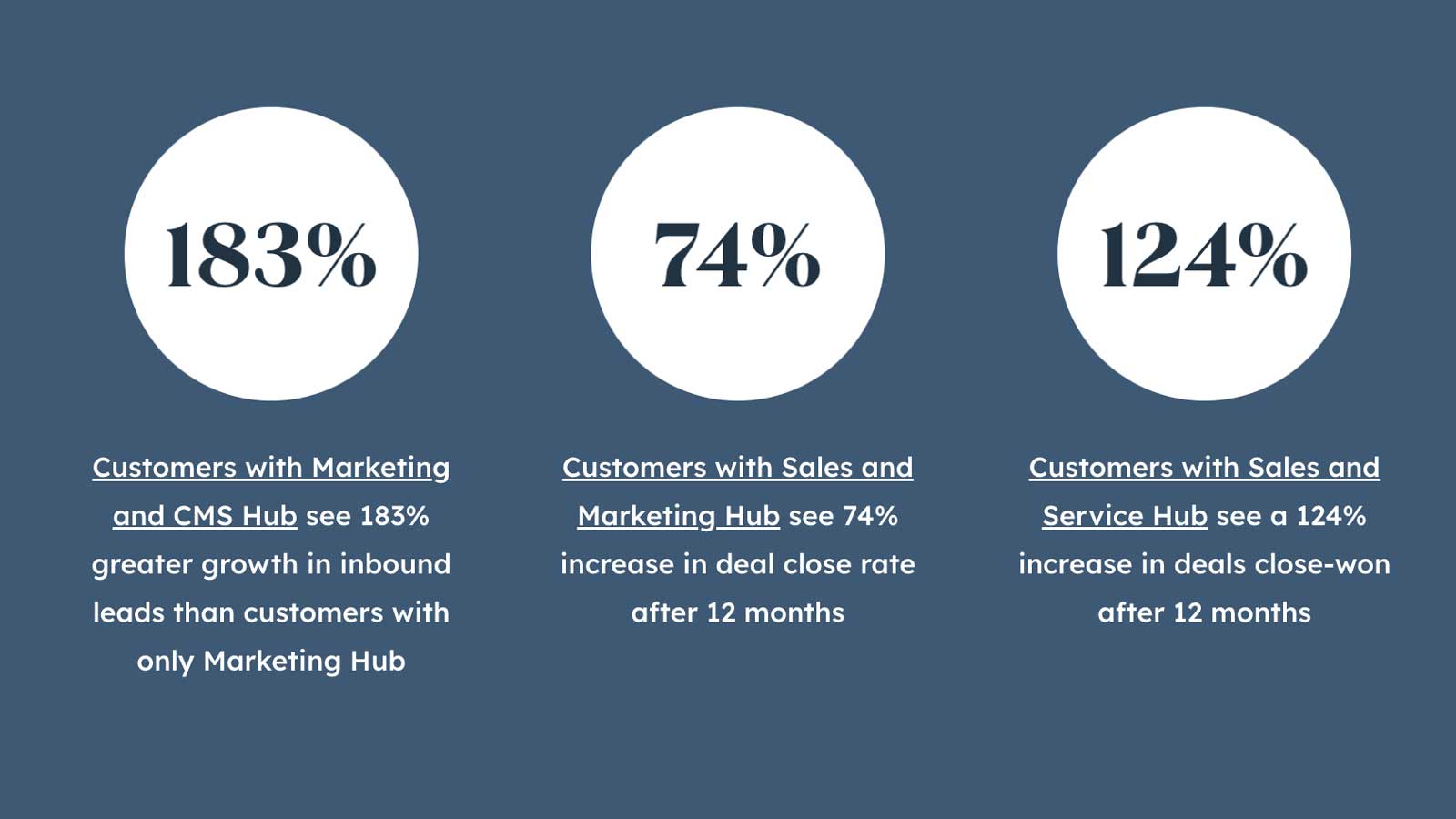
The best way to back up key metrics is with customers who agree with your narrative and can validate those metrics. You don’t need many, just focus on the marquee referenceable users who would be willing to speak on your behalf.

Unlike Us vs Them comparisons, the Why Page should be generic. It doesn’t target any specific competitor and the messaging should make sense when compared to any alternative.
You can take this a step further than just having a page.
Check out Cloudflare’s Why Us section. They’ve dedicated an entire submenu to it:

3. Double Down on Customer Testimonials
This is a low hanging fruit some companies seem to ignore.
If you have happy customers and you’re not actively capturing their testimonials then you’re automatically at a disadvantage.
Do you have a case studies page?
If yes, then good.
If not, make one ASAP.
Here are some common misconceptions about customer testimonials pages:
It needs to be a big library of customer quotes and videos.
Not true. Customers aren’t going to read dozens of testimonials anyway. Having one or two referenceable customers can go a long way. Hubspot’s customers page focuses on a handful of customers from key verticals. Contrast that with Okta’s long list of customers. Both are equally effective but the first is more within reach of a small business.
You need big name enterprises to demonstrate competence.
Actually, you need names from your target industries to demonstrate you can serve their vertical. Showing you have a small customer in the same industry as a new prospect is much more relevant than telling everyone that “Big Giant Bank” is a customer.
Anonymized customer testimonials don’t work well.
Some customers may not want their face or name used in your marketing materials… so anonymize them. Anonymous quotes are less impactful at first glance, but you can always offer to connect a prospect with the customer reference if they’d like to learn more.
Once you have a few testimonials ready to go – here’s how you can maximize their visibility:
- SEO optimize your case studies as separate pages on your website like this. They should be indexed in Google and optimized for the vertical use case and customer name.
- Post testimonial videos on Youtube. Include the customer name and company in the title and description like this. The goal is to maximize visibility when people search for your customer’s name.
- Post the video on LinkedIn as a native upload. Do not post the link to the Youtube video, this will reduce your reach. Tag the customer and their company in the post. This will increase reach on social media and can make the video visible to their followers as well.
4. Bid on Their Keywords
People argue this is a race to the bottom. I disagree. You’re playing defense.
Bidding on competitor keywords is one of the best ways to intercept traffic.
If they’re doing it to you, you need to do it to them.
Here’s a great example of Pipedrive targeting searches for Hubspot.
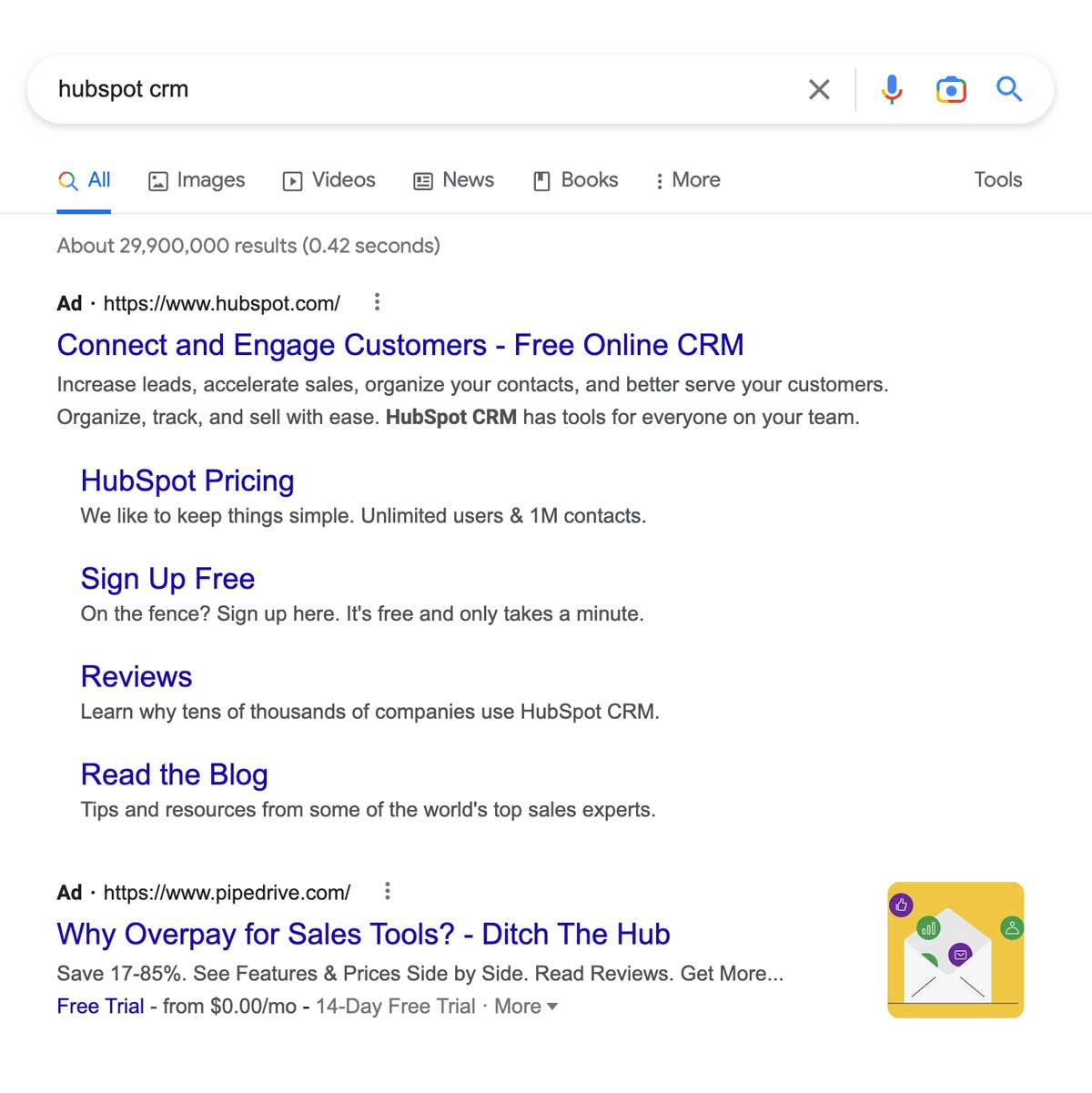
Notice how Hubspot is also bidding on the same keyword? This drives up the cost of the phrase for both vendors.
The problem is this method can quickly get out of control and become prohibitively expensive. Especially if your competitor has a bigger budget.
Some tips on running competitive Google ads without going broke:
- Bid on Exact Match phrases ONLY
If your competitor’s name is “Caroline’s Sporting Goods” then that’s what you target. Do NOT let Google convince you that broad match will work here. Even phrase match can lead to some questionable clicks. You only want the most qualified searches and that means targeting the competitor name exactly as it is written. - Ignore the Top of Page rate
You’re not trying to outrank your competitor. And chances are you won’t because the Quality Score of their ads will always be higher than yours and will lead to a lower CPC / higher positioning. Do not worry about this metric. Just focus on maximizing visibility. - Optimize for Clicks Over Conversions
It is not likely that someone looking for your competitor is guaranteed to convert just because you intercepted the search. They might even be a customer. So optimizing for conversion intent is not necessarily the right approach here.
Bonus tip –
Got a copyright strike? Modify the ad copy.
Occasionally a competitor might complain to Google about you using their company name in an Adwords ad. Don’t let them bully you. Just get creative and tweak the ad.
The ad you received a complaint about:

Your new and improved ad free of copyright violations:

You’ll be surprised how often this works.



